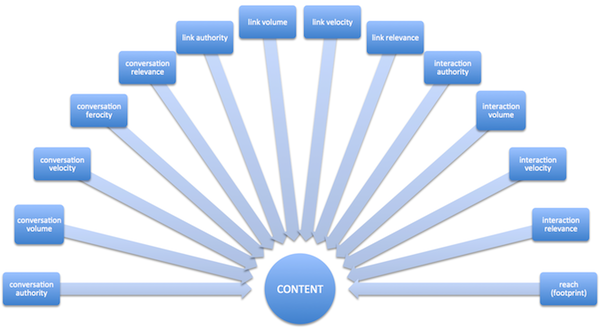
Every year I hear a new chorus of folks claiming that SEO is dead or that SEO has changed so fundamentally that it’s completely different now than it once was. I usually find these statements short sighted.
Nothing could be further from the truth.
SEO (still) isn’t dead and won’t be until the day that search engines can no longer drive significant traffic to websites (which won’t be for a long, long time, if ever).
Furthermore, with just a few exceptions, the only thing that has changed about SEO in my opinion is that search engines are getting better at enforcing their own rules. Thus, folks who have been historically using short cuts or tactics that might be considered less than best practices have been forced to adapt. And sad to say, there are a lot of those folks.
Search engine optimization remains an important part of the digital marketing landscape, and the path to long term success is relatively the same as it has always been.
Common SEO Campaign Activities
The basic fundamentals of SEO are still important and if done correctly, will still yield favorable results. Here are some SEO basics that have remained relatively unchanged (note this list isn’t intended to be comprehensive):
- Keyword Research
- Addressing Technical Issues Like:
- Duplicate Content
- URL Structure
- Flash/AJAX/JavaScript
- Schema.org Markup
- XML Sitemaps
- Internal Link Structure Alignment
- On Page Optimization of HTML Pages
- Video and Image Optimization
- Ongoing Performance Analysis
- Digital Marketing Channel Integration
This list wouldn’t be complete without everyone’s favorite topic: link building (I know people would argue with me that link building has changed dramatically, but please read the rest of the article first).
None of these things has changed that significantly enough over the last few years that they would make me say SEO is a completely new exercise compared to what it used to be.
Sure, there is less data to look at (thanks, Google) and there are changes in how the engines deal with some of the technical issues like canonical tags, rel=alternate syntax, and schema mark up to name a few, but it’s really no different than how we used to have to check to see if folks were using hyphens instead of underscores, 301 redirects instead of 302 redirects (I still recommend this by the way), and worrying about JavaScript not being indexed (which it still isn’t in some cases).
Tactics aside, it’s still all about understanding the technical issues that engines have problems with and ensuring that your site is set up correctly to handle those things.
Keyword Research
Not much here has changed except the tactics of how you go about understanding which words are being used by your audience to search for your products, services, or content.
Keyword research is still the same exercise in human behavior modeling and understanding how people are using language to search. Only the data sources have slightly changed and people are more aware of the importance of long-tail keywords.
Internal Link Structure
 People often say that PageRank is dead. However I invite you to try to rank a page for any important keyword with zero internal links pointing at it and see how far you get.
People often say that PageRank is dead. However I invite you to try to rank a page for any important keyword with zero internal links pointing at it and see how far you get.
I don’t advocate obsessing over toolbar PageRank, but understanding how PageRank works and how that affects your site’s internal link structure will help you rank in any search engine, not just Google.
There have been slight technical changes over the years. For example, PageRank sculpting no longer works because the PageRank that would otherwise flow through a link that has a nofollow tag on it isn’t redistributed, but rather “evaporates.”
But other than a few technical issues that affect some tactics, not much has changed in regards to the impact that internal link structure has on SEO (except maybe the weight of certain elements like keyword specificity).
Ongoing Performance Analysis
Certainly the case can be made that recent changes with keyword “(not provided)” has impacted our ability to measure SEO performance. No one can argue that. But ultimately the exercise of SEO performance analysis still has the same goals:
- Identify the state of your site’s performance.
- Compare that with historical performance to understand whether you’re improving.
- Identify and improve low performing pages.
- Eliminate any technical issues that may be impeding performance.
- Identify initiatives that worked and expand those programs (for example, link building based on content marketing).
- Use data to identify new opportunities.
All of these activities are still as important today as they have ever been, albeit more difficult because of the lack of keyword referral data.
Link Building & Content Marketing

I hear people say that Penguin completely changed SEO forever. I disagree. What it did do was make it so that everyonehas to do link building that adheres to best practices.
Links are supposed to be a vote of relevancy based on the strength of the content that they link to. Many people have been doing SEO for years the right way and never had to change anything as a result of these updates. What Penguin did was eliminate the value of low-quality links that never should have counted anyway.
In terms of acquiring links, people talk about content marketing like it is some new thing. Content marketing was here before the Internet and has been doing well ever since.
But content marketing is costly, time consuming, requires a vision for your business as well as your marketing plan, and needs to be integrated with other digital marketing channels like PPC and social media to maximize its effectiveness. And, because it’s hard to measure ROI in links, it typically wasn’t the first choice for a lot of marketers who couldn’t explain the value of those activities to people who didn’t understand SEO and hadn’t yet realized the power of content marketing for link building, developing brand, thought leadership, and customer acquisition.
Content marketing is a perfect example of how integrating SEO best practices has always been important across all other digital marketing channels.
In the early days, before social media was such a huge part of the Internet experience, aligning your PPC program with your SEO program was crucial. And it still is. Understanding which keywords are targeted, which keywords drive conversions, and which language improves conversion for both programs and applying those learnings to the other is important to maximize the effectiveness of both channels.
As social media became such prevalent force on the Internet, aligning it with SEO best practices became important as well and continues to be a critical aspect of any SEO campaign. Complementing content marketing efforts through social media can help acquire high quality links. This is also true for blogging, which has also been a critical SEO tool, not only for link building but for producing a new, consistent stream of quality content.
A number of other social channels, like YouTube, Twitter, and many more, have required SEO alignment for a long time now. Other than specific tactics, not much has changed in that regard either.
In terms of content creation, there is now more awareness of how certain keywords can imply where a customer is in their buying cycle, especially for business-to-business (B2B) websites. Aligning digital assets that cater towards those folks with the keywords that they commonly use makes sense and is an important part of any SEO program. Especially in terms of influencing those assets before they are created rather than after they are created. That might be new to a lot of people, but it has always been an effective strategy for increased engagement and better search rankings.
What Has Changed?
 If we look at all of the activities listed above, it starts to become clear that while the tactics have evolved a little, the core strategic activities and the goals of those activities remain largely unchanged.
If we look at all of the activities listed above, it starts to become clear that while the tactics have evolved a little, the core strategic activities and the goals of those activities remain largely unchanged.
All search engines want to rank the most relevant resource for any given keyword at the top of their results page. Doing so keeps users coming back, which makes search engines money. Thus search engines reward excellent content with high rankings.
If you want to be the most relevant resource for a particular keyword, you have to provide the content, and ultimately the supporting business model, that justifies your company’s website having that ranking.
A big part of that ranking comes from consistently producing relevant content that is of superior value to users and differentiates you from everyone else who wants that same number one ranking. Nothing about that has changed since the days of AltaVista, Hotbot, and Lycos.
What has changed over time is that search engines have gotten better at eliminating false signals of relevancy and quality. And based on that, a lot of folks are now starting to get a better perspective of what it takes to be a resource that is worthy of a top listing for a particular keyword. That understanding is causing many people to adjust their marketing activities accordingly.
But this isn’t because SEO is new. It’s because more and more people are finally starting to understand what the implications of SEO best practices really mean to their business.
Conclusion
The next time someone tries to tell you that SEO is dead or that SEO is completely changed, take it with a grain of salt.
My advice is to ignore all of that chatter, get back to SEO basics, produce great content that is relevant to your audience about the keywords that you’re targeting, build links by marketing that content to the right audience, analyze your performance, and adjust accordingly.
SEO is going to be here for the foreseeable future. It still produces an excellent ROI and improves user experience, if done correctly.

 People often say that PageRank is dead. However I invite you to try to rank a page for any important keyword with zero internal links pointing at it and see how far you get.
People often say that PageRank is dead. However I invite you to try to rank a page for any important keyword with zero internal links pointing at it and see how far you get.
 If we look at all of the activities listed above, it starts to become clear that while the tactics have evolved a little, the core strategic activities and the goals of those activities remain largely unchanged.
If we look at all of the activities listed above, it starts to become clear that while the tactics have evolved a little, the core strategic activities and the goals of those activities remain largely unchanged.